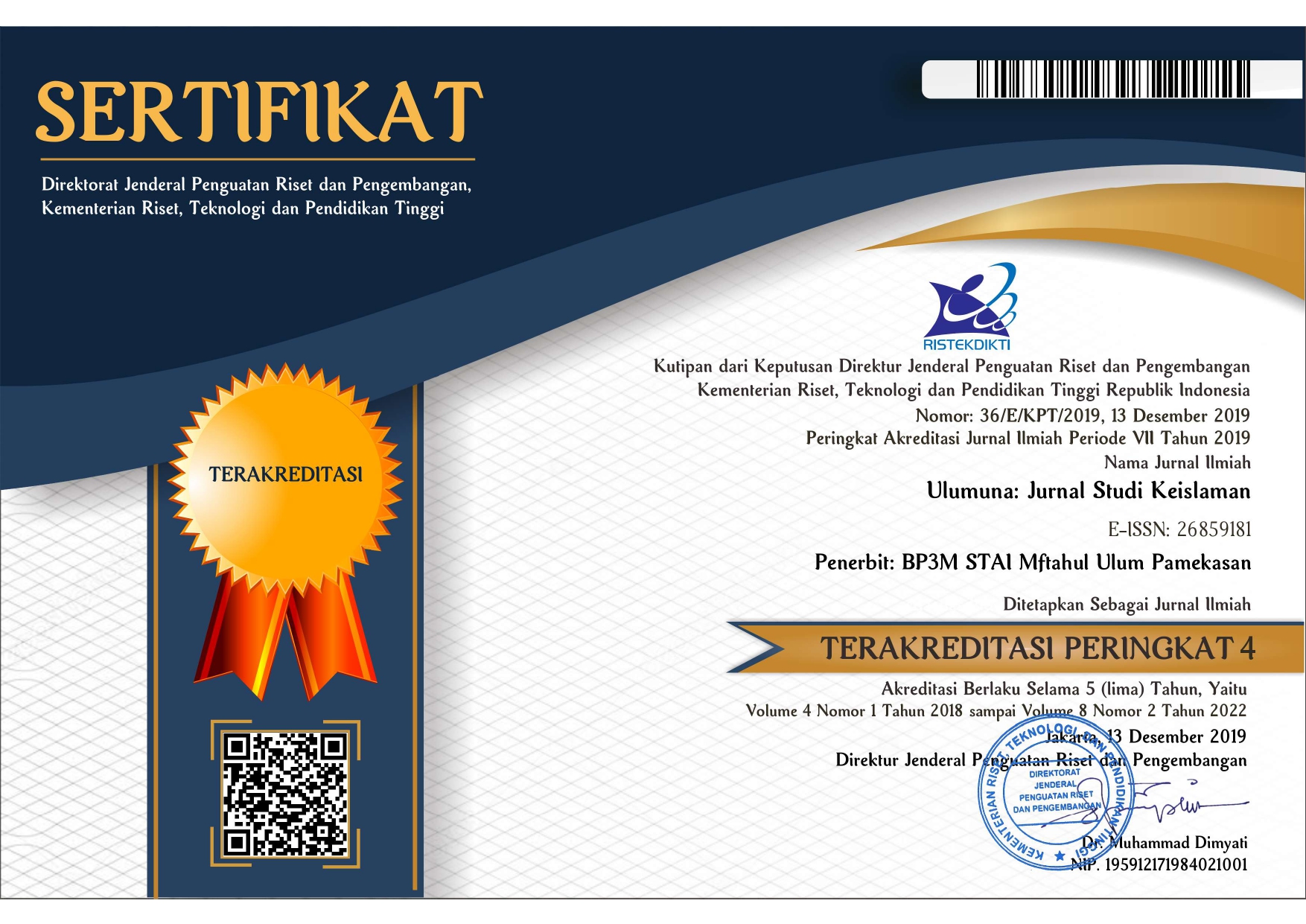| Accreditation Certificaate |
 |
| Template |
 |
| Tools |
| Visitors |
| Google Scholar |
Articles written in the Ulumuna Journal: Journal of Islamic Studies include scientific papers on Islamic Education, Islamic Law, and Islamic Social, both in the form of conceptual ideas, literature reviews, and research results from various perspectives.
The following are the provisions for writing articles in the Ulumuna Journal. Namely:
Guidelines for Writing Manuscripts
Manuscript Structure
| Accreditation Certificaate |
 |
| Template |
 |
| Tools |
| Visitors |
| Google Scholar |
Ulumuna: Jurnal Studi Keislaman
e-ISSN: 2685-9181Â p-ISSN: 2442-8566
Alamat Redaksi: Jl. Raya Palenggaan KM. 11 69301
No. HP 082332975294, Pamekasan, Jawa Timur, 69362
Email: ulumuna.journal@gmail.com
This work is licensed under a Creative Commons Attribution-ShareAlike 4.0 International License.
